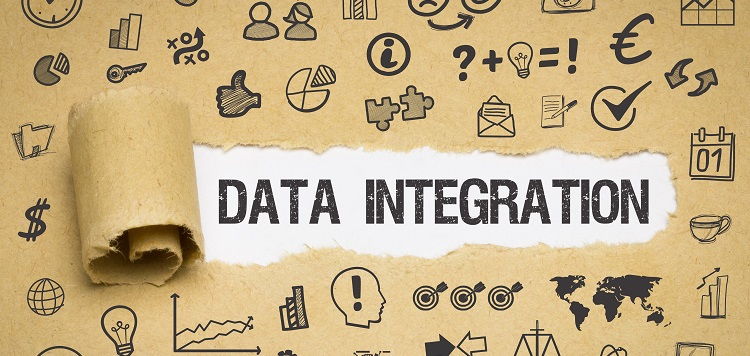Data integration is the process of collecting data from multiple sources and combining it into a single, unified view. This process is essential for organizations of all sizes that want to maximize the value of their data. However, despite its importance, data integration is not always easy. Integrating data from multiple sources can be a challenging task, and it requires the right tools and strategies to do it successfully. In this article, we will explore the challenges of data integration, the benefits of integrated data, and some of the common data integration problems that businesses face.
The Challenge of Data Integration
Integrating data from multiple sources can be incredibly challenging. Data integration involves pulling information from various sources such as transactional databases, social media platforms, and sensors. The challenge lies in bringing together the data in a cohesive and organized way from diverse sources. Furthermore, data sources can have different formats which can lead to difficulties with data mapping.
The difficulty of successful integration
Many organizations struggle with successful integration. They may face challenges due to a lack of appropriate tools or techniques to merge data sources. A company’s IT infrastructure might not be sufficient to handle the large amounts of information.
Benefits of Integrated Data
– Improved accuracy and consistency of data
– Increased efficiency and productivity
– Enhanced data analysis and reporting capabilities
– Streamlined business processes
– Better decision-making
– Improved collaboration and communication across departments and teams.
Though difficult, the benefits of integrating data from multiple sources are worth the effort. Integrated data creates a layer of information connectivity that lays a base for research and analytics. Companies can use integrated data to identify relationships and patterns that may exist between different data subsets. This workflow can maximize the value of business data, leading to benefits such as improved insights and automation of business processes.
Informational Connectivity
Integrated data provides a foundation of interconnected information resulting in better insights. For example, a healthcare provider can utilize a patient’s medical history, admissions, and vitals from different departments to gain a more complete understanding of their ongoing treatments. This can lead to better-informed decisions and ultimately result in improved patient outcomes.
Research and analytics
Integrated data can also be used for research and analytics. Researchers can quickly map existing demographic information to disease spread, resulting in fast and reliable data for disease management.
Maximizing the Value of Business Data
The value of business data is maximized when the enterprise leverages it to inform critical business processes. Integrated data can provide insights powered by machine learning or predictive analytics to create significant business value. In logistics, supply chain optimization driven by predictive analytics can be used to improve the accuracy and efficiency of the shipping process.
Sources of data for integration
Data sources for integration can vary depending on the company’s use cases. Examples of some data sources include transactional databases, IoT devices, social media data, healthcare records, and supply chain data. Integrating data sources from diverse platforms makes integration challenging, but enables deeper insights.
The Ongoing Nature of Data Integration
Data integration is an ongoing process that evolves as organizations grow. As the number of data sources increases, the importance of integrated data becomes more apparent. Companies that implement data integration should do so in a manner that is scalable and accounts for future data sources and the development of the business.
Common data integration problems
Despite its importance, data integration often faces significant challenges. Some of the most common data integration problems that businesses face are:
1. Complexity of Integration – Integrating multiple data sources can be a complex process.
2. Inconsistent data formats can make data mapping challenging, as the data may have different formats, making it difficult to standardize.
3. Quality issues: Poor data quality can lead to erroneous insights or decisions being made.
4. Security concerns – The integration process can introduce new security risks and vulnerabilities to the organization.
Importance of Data Quality
Data quality is crucial in ensuring accurate and reliable results from data analysis. Poor data quality can lead to incorrect insights and inefficient decision-making. In many cases, data quality issues can be a result of data entry errors, missing or incomplete data, or inconsistent data formats.
Investing in data quality tools and processes can help ensure that data is accurate, complete, and consistent. This can involve implementing data validation checks, automated data cleaning processes, and establishing guidelines and standards for data entry.
Data quality is particularly important in industries such as healthcare, finance, and transportation, where incorrect data analysis can have serious consequences. Ensuring data quality requires a proactive approach and ongoing efforts to maintain high standards for data accuracy and reliability.
The quality of data can determine the value of a business’s intelligence. Simply put, the accuracy of insights and predictions can be affected by the quality of the data integrated. Therefore, it is crucial for businesses to maintain high-quality data integrity, which can be accomplished with data validation and cleansing protocols in place.
Shift in Data Integration Methods
Data integration involves different methods and techniques, but the trend is shifting towards ELT (extract-load-transform) systems and cloud-based data integration. ETL systems have traditionally been used for data integration, but they are now being replaced by ELT systems.
ETL to ELT
An ELT system loads raw data directly into the data warehouse (or data lake), shifting the transformation process to the end of the pipeline. With this shift, some of the traditional issues, such as mapping and maintaining data accuracy, can be partly automated, resulting in increased efficiency and time savings.
Cloud-based Data Integration
With cloud-based data integration, businesses can leverage the integration to run on cloud infrastructure, offering improved scalability and cost-efficiency. The cloud technology also provides advanced features such as facilitating collaboration, data governance, and data security directly from the cloud.
ELT System Process
The ELT system process involves the data being extracted from data sources, stored in a data lake, and cleaned and transformed into a consumable format. This data goes through semantic reconciliation before it is partitioned and analyzed. This process enables businesses to streamline the process of data integration and create a scalable data management tool that can grow with the organization.
Accessing Cloud-Based Integrated Data
Businesses can access integrated data from the cloud with different devices, making it easier to access and share real-time data, analysis, and insights. This encourages collaboration and automation between departments, leading to quicker and more efficient operations.
Data integration is the key to maximizing the value of business data, resulting in better-informed decisions and improved business outcomes. Despite its complexities, the integration process can be made easier by adopting appropriate tools, techniques, and methods such as ELT systems and cloud-based data integration. Data integration is an ongoing process for companies looking to achieve holistic, actionable insights, and efficiency through integrating data.


